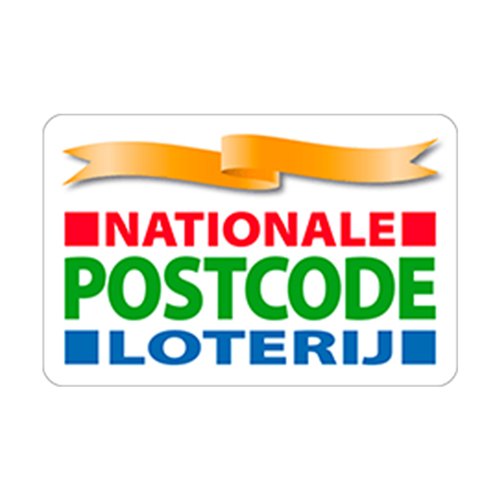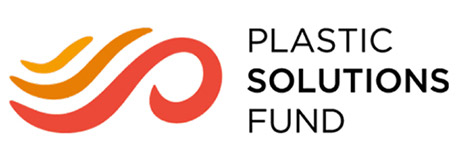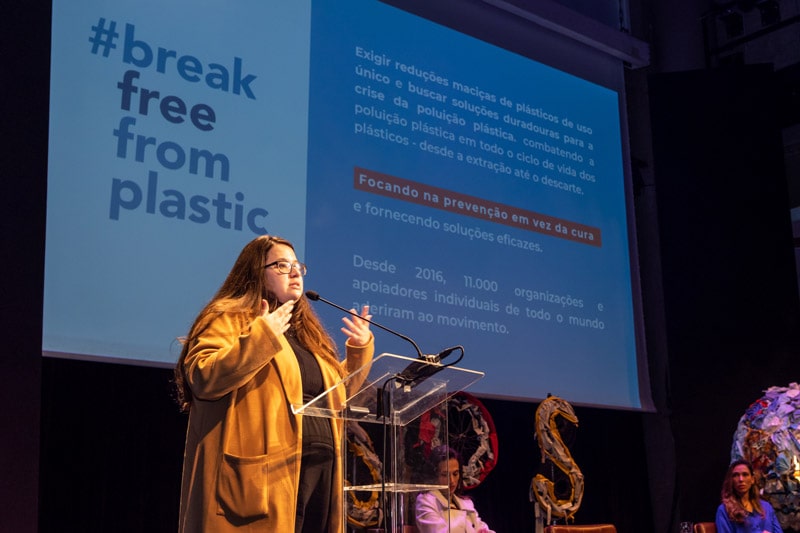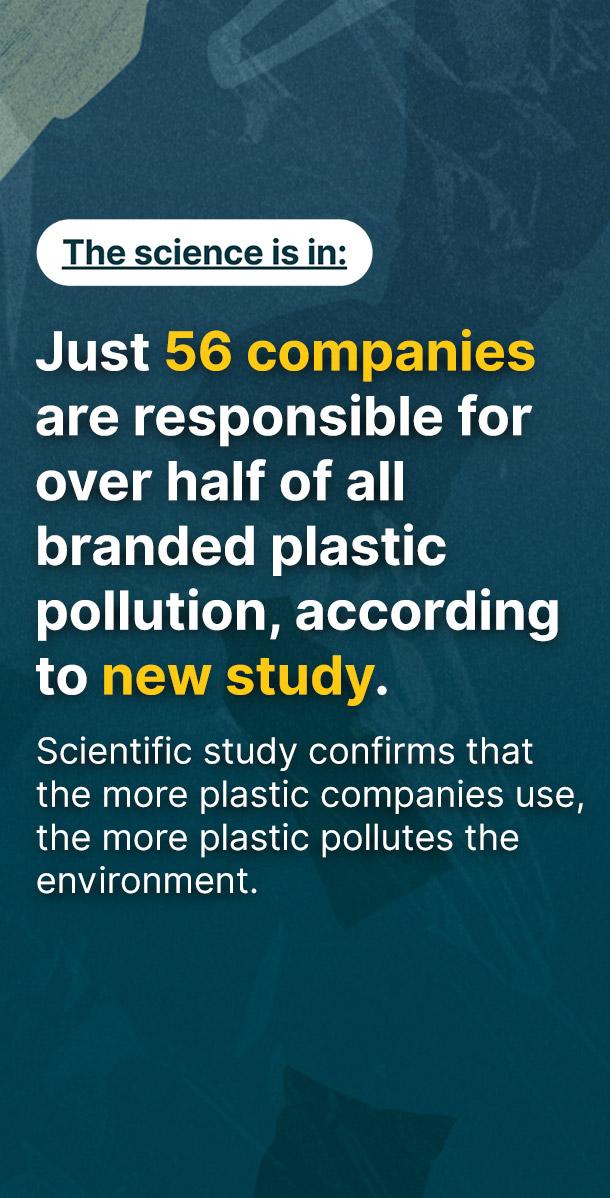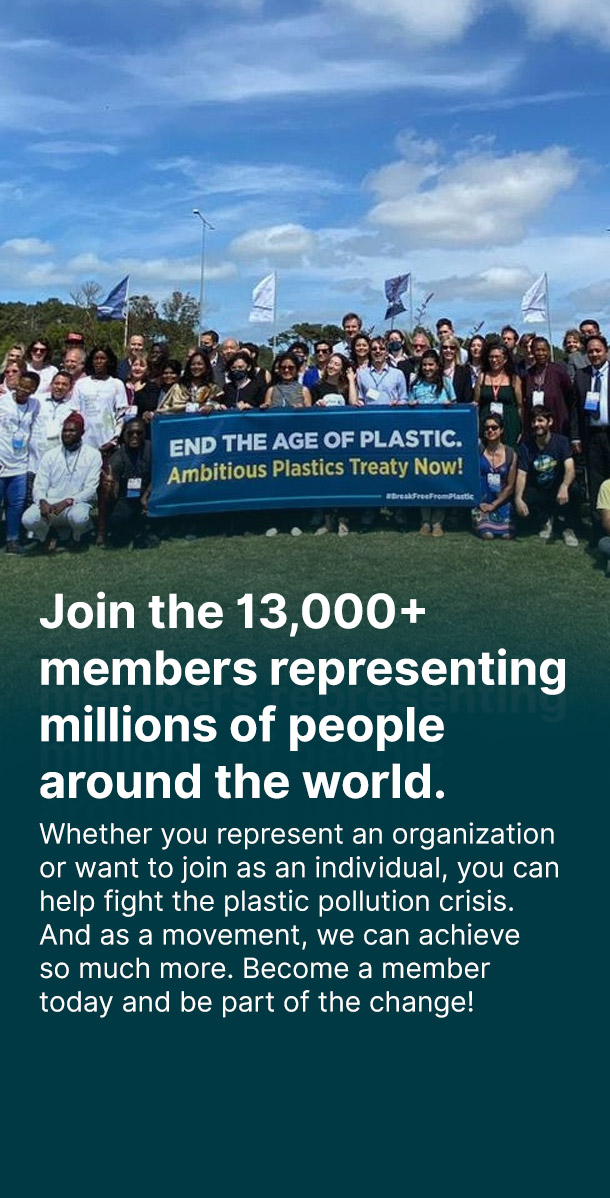With an industry that produces 500 billion single-use plastic items annually in the country, the need to transition into new distribution models is urgent¹.
During an event in São Paulo, Brazil, that took place on June 10th, 2022, one of the Break Free From Plastic Senior Youth Ambassadors, Maria Eduarda, was invited to represent BFFP visions and the impacts of the companies related to the plastic waste. Procter & Gamble and Nestle, two of the biggest top polluters – the fourth and fifth according to the 2021 Brand Audit report – were present.
Recently, The Ellen MacArthur Foundation released the Global Commitment 2022 Progress Report, showing that companies responsible for 20% of all plastic packaging produced annually will “almost certainly” not meet their own voluntary target of using plastic packaging that is 100% reusable, recyclable, or compostable by the year 2025. It was also reported that there is an overall increase of virgin plastic use in 2018². Wrapping up their products with disposable plastic, the top polluter companies need to be accountable for all of the waste created.
Marcelo Rocha was also one of the panelists to represent the Heinrich Boll Foundation, a core member of BFFP. Their report, “Plastic Atlas” indicates that at least 70% of all items in the beaches of Brazil are plastics.³
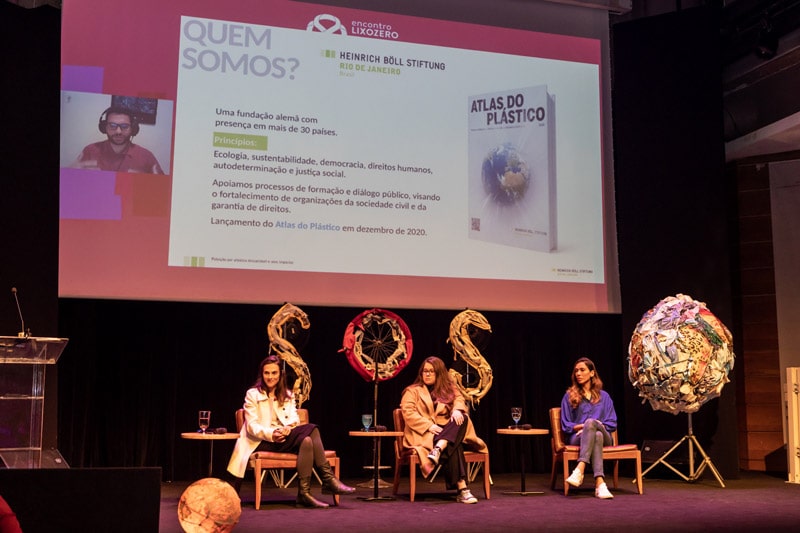
Photo credit: @milamaluhy / @encontrolixozerosp
Procter & Gamble presented their target of changing 100% of their packaging products to be recyclable or reusable by 2030, and reducing 50% of the virgin petroleum plastic in consumer packaging. The company's virgin petroleum consumption has increased 3% since 20174. To be up to date with the National Solid Waste Policy in Brazil, the company offsets the generated waste through extra remuneration of local cooperatives. From the possibilities presented, none of them specify targets to implement reduction and replacement systems.
Nestlé also presented their targets: 100% of every package to be reusable or recycled until 2025. The presented goals of the company were: redesigning packaging, supporting circular infrastructure, and raising awareness of consumers. However, they did not show any percentage of progress to achieve the target of effective reusable or recyclable packaging in the market, and the amount of investment in the circular infrastructure. Although raising awareness of consumers is important, achieving a circular economy in packaging materials should be prioritized. The company also takes advantage of plastics credits, offsetting the waste for every package produced in Brazil. Plastics credits certificates do not guarantee that the companies’ products are effectively recycled. Also, the company slogan uses the term “regeneration”, but no evidence was shown to prove that the company’s economic activity might produce a positive impact in the environment rather than a negative impact.
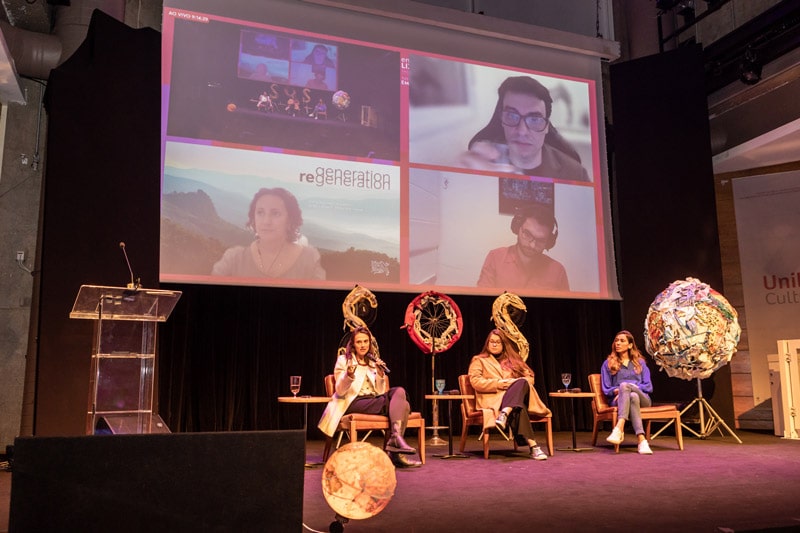
Photo credit: @milamaluhy / @encontrolixozerosp
Maria, a young activist from the city of Florianópolis, presented her reality of plastic pollution since childhood: “My generation was born in placenta that contains plastics, and we used diapers based on plastic, our toys were based on plastic, our food used cutlery based on plastic, the first birthdays parties and gifts were based on plastics, and when we grew up, the sanitary pad was made of plastic”. “It is a responsibility of mine and the other generations to rethink about how we can remediate the problem and redesign the whole system, taking into consideration all the impact of plastics on the environment.
Maria expressed her frustration after the event, saying, “If corporations have been doing sustainable practices for a long time, then why are we here now? Why do we have this problem? It is difficult to scale up solutions but if they have been doing it for a long time, why haven’t they come up with a solution yet?”
Looking at Nestlé's global updates on the Global Commitment 2022 Progress Report, the company declared that only 1% of all products or packaging are designed for reuse models, which is far from the 2025 target of 25%. P&G is not a signatory of the global commitment. Since it is observed that companies are failing to achieve their own commitments, there is an urgent demand for governments to ensure a global plastic treaty to eliminate plastic waste and pollution at a global scale.
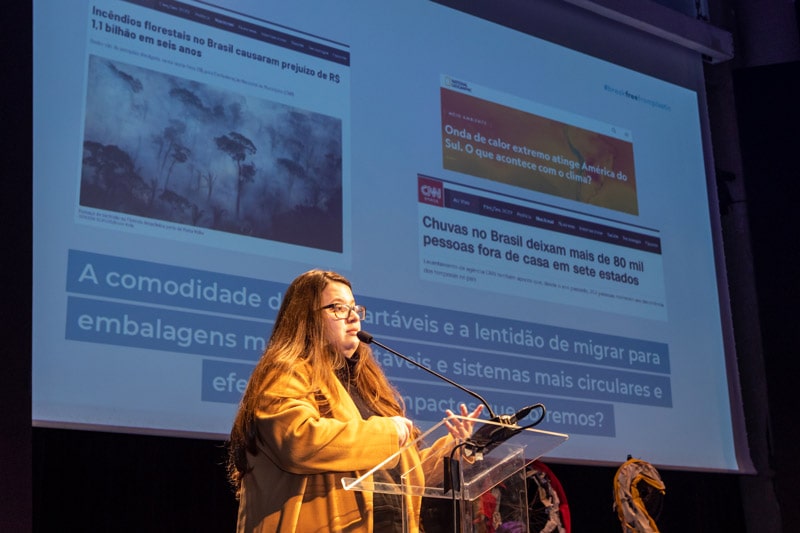
Photo credit: @milamaluhy / @encontrolixozerosp
If you want to learn more about the panel, check the recording of the presentation (in portuguese).
Are you a teacher and want to learn more about how to integrate Plastic-free Education Curriculum into your own lesson plans? Break Free From Plastic is launching their first ever training program for educators.
Learn more about the map for science-integrated Plastics Education for Teachers.
Sources:
¹ Iwanicki, Lara. Um oceano livre de plástico: desafios para reduzir a poluição marinha no Brasil. 1. ed. Oceana Brasil. 2020. Available at: https://brasil.oceana.org/relatorios/um-oceano-livre-de-plastico/
² Global Commitment 2022. Ellen MacArthur Foundation. Available at: https://ellenmacarthurfoundation.org/global-commitment-2022/overview.
³ ATLAS DO PLÁSTICO. Fatos e números sobre o mundo dos polímeros sintéticos. Fundação Heinrich Böll. November 2020. Available at:https://br.boell.org/pt-br/atlasdoplastico.
4 Proctor & Gamble. Sustainability. Available at: https://www.pginvestor.com/esg/environmental/plastic-packaging/default.aspx#plastic_packaging_goals.
Break Free From Plastic Youth and BFFP Plastic-free Campuses is supported by:
